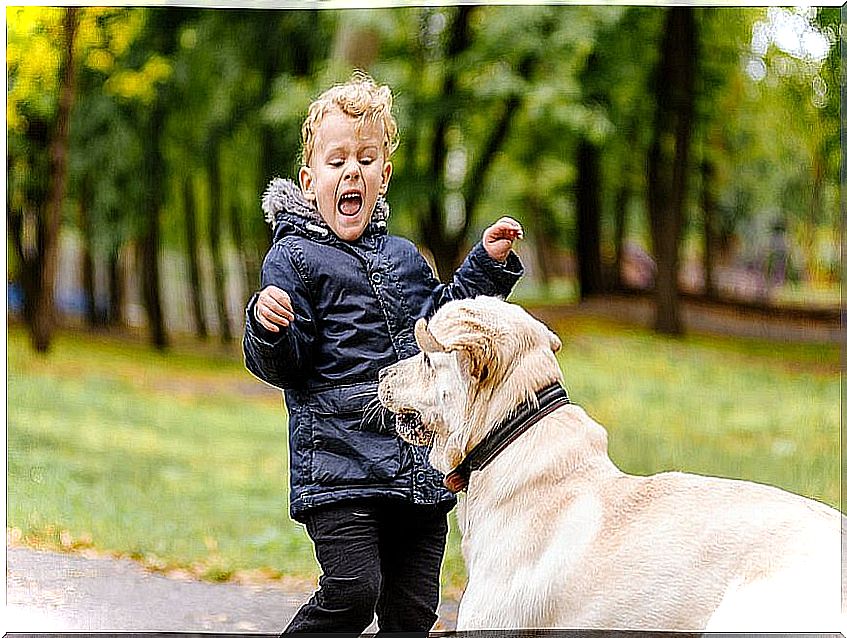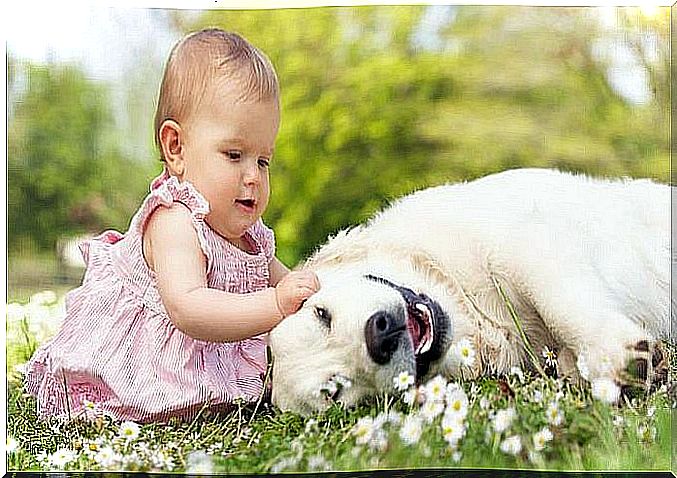My Son Is Afraid Of Animals. What Should I Do?
For many children the experience of having a pet is irreplaceable, while others miss out on fear. Help them lose their fear of animals so that they can enjoy the diversity of nature.

Not all children react the same when they see a dog or other pet. Some want to pet them and are greatly attracted to them. Others prefer to stay away and show that they are afraid of animals. There is no specific reason for this to occur. Sometimes it can be due to a previous bad experience or being taught that an unfamiliar animal can be dangerous. There are also children who are simply intimidated by the strange figure of the animal.
“There are more active and adventurous children, others are calmer and less open to new experiences. They are more stressed by the new and the unknown, ”explains Dr. Tracy Dennis, from the Department of Psychology at Hunter University in New York.
Although being afraid is a defense mechanism that keeps children in a safe area, it is better to teach them to exercise caution and respect, but not a fear of animals that inhibits them from the enriching experience of sharing with them.
How to lose the fear of animals?
To take that step between fear and respect there are some recommendations that parents can follow to guide their children:
Try to understand the fear

Fear is irrational. Therefore, forcing children not to be afraid of animals is not going to help eliminate it.
It is best to try to understand what causes them fear and to find a strategy to help them cope. If, for example, your child is afraid of a dog because of his size, do not suggest that he approach a large one. When they are with a small and calm dog, approach yourself first and encourage him to follow you with your protection.
Teach him to approach the animal
Children may approach with excessive excitement or clumsiness and startle the animal, which usually generates a violent reaction that will frighten the child more.
It is best to guide them through each step and carefully choose the words we use. It is better to avoid words that alert their fear such as “Be careful not to bite you” or “Do not get too close, it can be dangerous.” Use positive reinforcement, such as “Approach lovingly, be nice to the animal.”
It begins by teaching him that you always have to ask the owner for permission to know if it is okay to approach the animal. Then it is better that they let themselves smell their hands before trying to caress them. Both cats and dogs are more comfortable after smelling someone new to them.
Try to distract the animal by stroking its face. Then invite the child to touch it from the side, preferably not by the tail, to avoid scaring the animal. The animal’s face can be intimidating to the child.
Avoid puppies

Young animals are more unpredictable than adults. For them, playing can be biting, scratching or jumping on people. What for an animal can be a gesture of trust, joy and affection, for a child it can seem like a hostile gesture.
Learn the language of animals
Pets have their way of communicating with people. Learning that language and teaching it to your child can be very helpful in facilitating an encounter.
For example: “The open mouth with the lips turned back, the tongue sticking out and the relaxed face is an invitation to interact,” says Linda Case, author of the book Guide To Understanding Our Two Best Friends , about dogs .
Teach him good manners

Like puppies, children have unpredictable reactions. That fear can turn into excitement once the first encounter with the animal is successful. With that emotion, your actions can frighten or annoy the animal. Explain that they should not push it, grab it by the hair, or hold its tail.
Don’t bring an animal home
Many parents believe that it is a good idea to bring an animal home. In time the child and pet may get used to each other, but many days of unnecessary stress will pass.
Wait for your child to be ready. There are those who keep the animal in a room until the child begins to trust them, but this is not advisable either. The pet can become aggressive if this happens, since it understands that its function is not to socialize.









